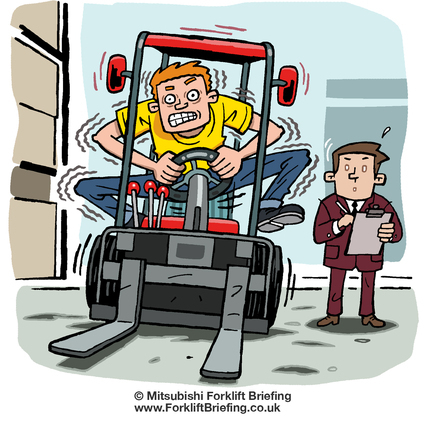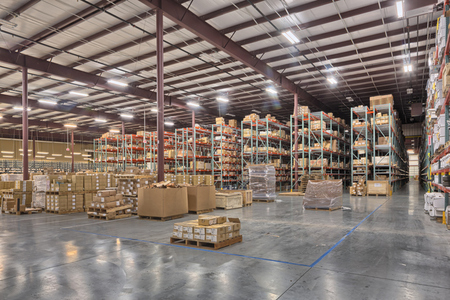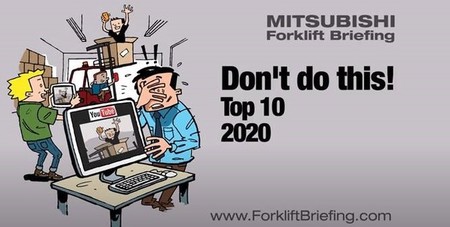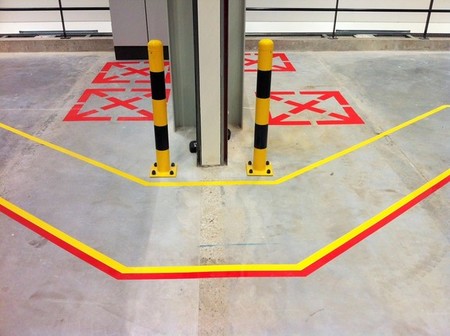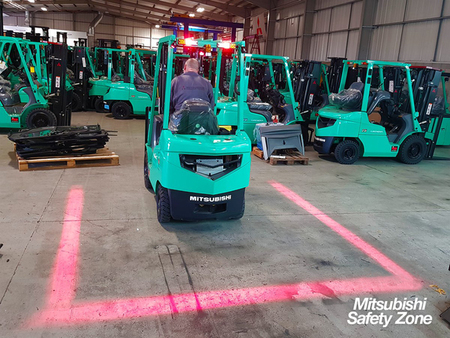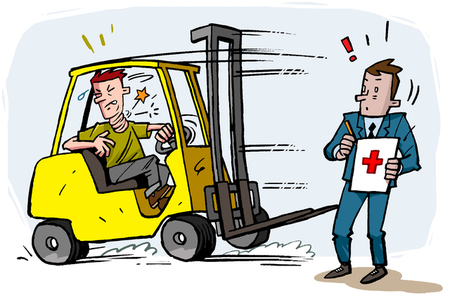
Is poor visibility putting your business at risk?
Why forklift pros put visibility first..
When it comes to purchasing a new truck, it is operator visibility that tops most forklift buyers’ wish lists. Indeed, in a recent pan-European study, 62 per cent of respondents named operator visibility as the most critical factor in their truck buying decision – ahead of reliability, stability and operating costs.
And for good reason, too.
During forklift operations, operators rely on their vision to gather 90% of the information needed to carry out a task . It’s hardly surprising, then, that visibility issues play a role in more than 80% of forklift truck-related accidents .
Nowhere is this threat greater than when your trucks are lifting loads to heights of three or four metres – and often more. Here, visibility isn’t just desirable, it is absolutely crucial. Your workers are exposed to real danger from falling items if the operator isn’t in total control of every movement.
Statistics suggest that as many as two thirds of forklift accidents kill or injure someone who was not driving the truck at the time – meaning that anyone visiting or working at a business which uses a forklift truck could be at risk of injury... or worse.
Falling loads are a leading cause of fatalities involving forklift trucks – accounting for more than 40% of deaths – according to a 20-year accident study.
Every accident is a personal and commercial tragedy, which is why the subject of visibility is extremely high on the industry’s agenda.
Visionary thinking
Traditionally, operators have been protected from falling objects by metal bars in the roof of the overhead guard. Although these structures form an effective barrier to larger objects, they do very little to stop smaller items. What’s more, they can present a significant obstacle to operator visibility.
In a perfect world, an overhead guard design would feature no bars, but this has proved a challenge... until now.
Using materials similar those employed in applications as diverse as the cockpits of jet aircraft and the bullet-proof windows of the ‘Pope-mobile’ Mitsubishi recently developed a hi-vis overhead guard that is totally see-through. Available on its electric counterbalance truck, the Flexiglass overhead guard won the Award for Safety at the highly-regarded Awards for Excellence 2011 (sponsored by the UK’s Fork Lift Truck Association).
Offering unprecedented visibility, it employs high quality polycarbonate, which is around 250 times stronger than glass and 30 times that of acrylic glass (PMMA). Importantly, the revolutionary design – which complies fully with ISO6055:2004 and ISO12100 – addresses both primary and secondary safety concerns. Not only do operators enjoy a far better view to the forks but also unrivalled protection against falling objects – including small but potentially dangerous items such as bolts which might pass through a traditional slatted overhead guard.
The popular Mitsubishi family of reach trucks benefits from the revolutionary Visionmast, which allows operators to handle goods with precision and effortless ease. ‘Hot extrusion’ technology has allowed a unique construction in which the hydraulic cylinders are enclosed within the profile of the mast’s first stage. This adds extra stiffness to the mast, as well as providing a clearer view.
This stiffer, lighter and more compact mast structure offers less sway, higher residual capacity (40 per cent better than a conventional mast) and an amazingly clear view.
Reversing risks
Faced with an obstructed view, forklift drivers have no choice but to operate in reverse. According to a recent study of operators in Europe, Russia and the Middle East, up to 77% of forklift trucks are always or very frequently driven in reverse.
While this does solve the immediate problem, it can result in another. Reverse operations require the forklift operator to turn his neck and shoulder, while keeping a foot on the pedals and a hand on the wheel. This twisting action is linked with serious long-term neck and upper back injuries.
Swivel seats – available as an option on many models – minimise this danger by encouraging optimal body posture. In turn, this relieves stress to the neck, shoulders and thighs. Often, there is also the option of a handle on the rear headguard leg, incorporating a horn button, so that the driver can remain secure and can quickly blow the horn if he needs to.
Features of a high visibility forklift
- Hi-vis overhead guard roof for unobstructed upward views
- High visibility masts for clear forward vision
- Rear handle with horn button
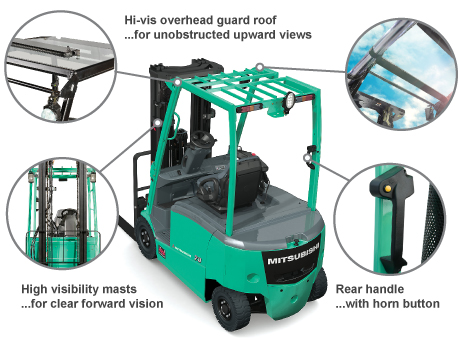
Our conclusion
When you choose a truck that maximises your operator’s visibility, you maximise his or her ability to manoeuvre safely and precisely, with confidence. In turn, every aspect of your operations will benefit from greater safety, foremost your employees, but also reduced product damage and enhanced productivity.
For expert advice on the correct specification for your application, click here.
- Action points
- Contact your local forklift dealer for advice.
- Book a site survey.

As more and more companies look at optimising operations, it's important to realise associated dangers. No company ever sets out to compromise safety, but it can and does happen.
Country Sales Manager
